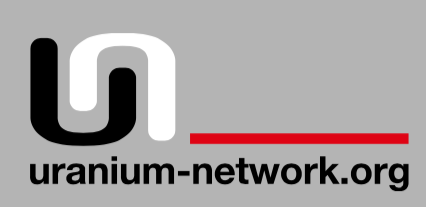 [30.07.2012] Elephants, Rhinos and the environment under threat from 60 million tons of radioactive waste as World Heritage Committee agrees boundary change that will allow uranium mining at the Tanzania Selous Game Reserve – a World Heritage site.
[30.07.2012] Elephants, Rhinos and the environment under threat from 60 million tons of radioactive waste as World Heritage Committee agrees boundary change that will allow uranium mining at the Tanzania Selous Game Reserve – a World Heritage site.
Download/View PDF (Press Release)
Download/View PDF (Additional Information)
Freiburg, Germany, July 30, 2012
A foreign uranium mining conglomerate will be allowed to exploit the precious Selous Game Reserve in Tanzania after the World Heritage Committee (WHC) decided, at its July 2012 session in Russia, to accept what was described as a “minor boundary change” of the site. The change had been requested by the Government of Tanzania, in order to make way for the development of a major uranium mine, Mkuju River Uranium Project, owned by Russian ARMZ and Canadian Uranium One.
The decision to allow the boundary change would allow the Mkuju River uranium project, situated in the South of the Selous Game Reserve at its transition to the Selous Niassa Wildlife Corridor, to go forward. The Tanzanian Government lobbied heavily for the boundary change, after declaring its intent to ” win the battle” against the UNESCO WHC.
Dozens of environmental groups around the world, many of them members of the German-based Uranium Network, decried the WHC decision which could lead to the creation of 60 million tons of radioactive and poisonous waste by the mine during its 10-year lifespan (139 million tons if a projected extension of the mine should be implemented). The radioactive wastes pose a serious threat to Selous Game Reserve which is home to the world’s largest elephant population and other wildlife. No proven methods exist to keep the radioactive and toxic slush and liquids from seeping into surface waters, aquifers or spreading with the dry season wind into the Reserve.
It remains completely unclear how the company or the Government of Tanzania will guarantee that the impact of millions of tons of radioactive and toxic waste will be “limited”. The WHC’s decision appears to be influenced by heavy corporate and government lobbying and not by sound science. It sets a horrible precedent that could threaten other World Heritage Sites with similar dangerous and damaging exploitation.
The decision is in stark contrast to previous decisions of the WHC of 2011 stating that mining activities would be incompatible with the status of Selous Game Reserve a World Heritage site.
The environmental groups question whether WHC members have fully understood and given adequate attention to the implications of a uranium mine – including diesel generators, uranium mill, housing, heavy truck roads, as well as the creation of millions of tons of radioactive and toxic waste which should be contained safely and separate from the environment for thousands of years.
Uranium mining creates radioactive dust, contaminates waterways and groundwater aquifers and depletes often precious water supplies. Once abandoned, the radioactive contamination from the mines can persist for decades or even hundreds of years.
The WHC’s decision was made at a time when Russia was chairing the WHC session in St. Petersburg, Russia; Mkuju River uranium project – which basically lives or dies with the decision on the boundary change – is majority owned by Russian ARMZ, a subsidiary of ROSATOM – who bought it from Australian Mantra Resources earlier in 2012.
The environmental groups urge the World Heritage Committee to reconsider its decision on the Selous Game Reserve Boundary Change and call upon the Government of Tanzania to refrain from licensing a uranium mine in Selous Game Reserve or on lands cut out from it.
Gunter Wippel
uranium-network.org, Freiburg, Germany
